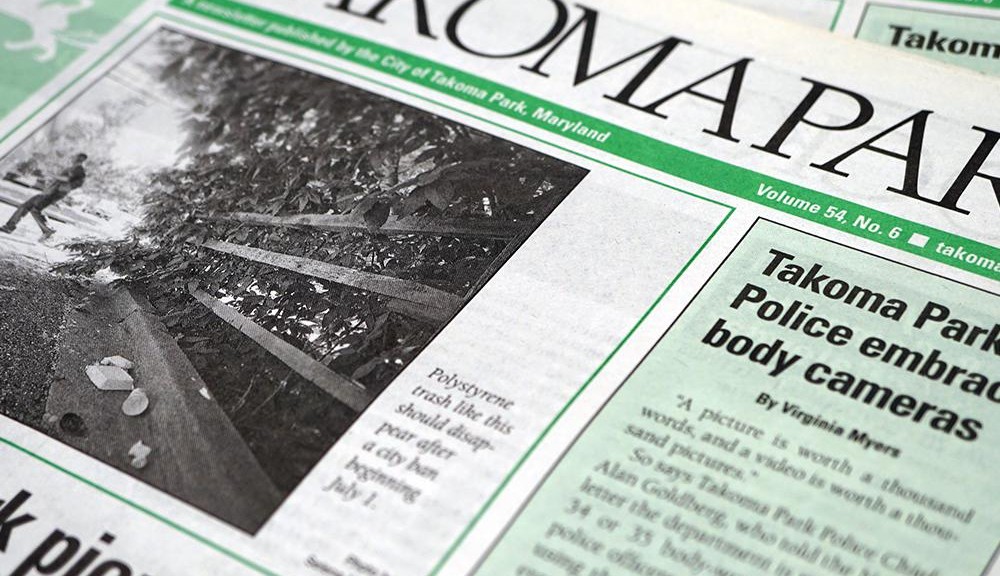By Rick Henry
“Put your money where your mouth is,” goes the old saying. But when it comes to investing, the Old Town Business Association (OTBA) wants Takoma Park residents to “put their money where their home is.” To that end, the organization has established Takoma Notes, an innovative community investment program that allows citizens to invest in local businesses.The program identifies local businesses that would benefit from additional capital and develops specific loan packages to meet their needs.
According to City Councilmember Seth Grimes, Takoma Park is a perfect community for such an initiative. “Takoma Park has a strong “shop local” preference, for non-chain, locally owned businesses, and those businesses excel at meeting community needs while creating economic opportunity for residents and recycling profits back into the community,” he said.
He also pointed out that the timing is right and that programs similar to Takoma Notes are becoming more popular in states and localities. As an example, he cited Maryland state legislation that was enacted in 2014 that allows Maryland businesses to borrow up to $100,000 from Maryland residents who lend up to $100 each.
A little history
Indeed, the Takoma Notes program builds off an existing revolving loan program that was established by the OTBA Main Street Economic Restructuring Committee in 2009, according to committee chairman Preston Quesenberry. The program is a yearly fund of $125,000 that the OTBA uses to issue loans to local businesses. Money from the fund comes from local residents and its success over the years inspired members of the restructuring committee to explore other options, said Laura Barclay, Executive Director of the OTBA.
“There is always a need for money for local businesses and the revolving fund is a fixed pool,” she said. “So we started looking at how we could expand the pool.”
“The demand [from local businesses] was exceeding the amount we could lend out through the fund,” Quesenberry said.
On the supply side, Quesenberry said the committee noticed that the people of Takoma Park seemed willing not just to support, but to invest in, local businesses, citing the highly successful Kickstarter campaign that helped provide funds to La Mano Coffee Shop near the Takoma Metro.
Quesenberry said the committee’s initial thought was to simply let more local residents contribute to the revolving loan fund. But increasing the size of the fund had its drawbacks.
“We didn’t know if the demand would always be there,” he said. “So we decided to explore a project-by-project approach.”
The result is Takoma Notes.
The mechanics
Through the program, local businesses apply for funding. Members of the OTBA vet the businesses, then raise the money to make the loan by issuing Takoma Notes to local investors. When the OTBA raises the necessary amount within the established time period, it then lends the proceeds to the specified Takoma business.
The business then pays interest and principal to OTBA which in turn passes those payments to the Takoma Note investors. The program is offered to all Maryland and Washington, D.C. residents. Representatives from Colombo Bank have worked closely with OTBA organizers and the bank will handle the investments and transactions.
“This is a great opportunity for businesses to get capital,” said Barclay. “It is easier to acquire than traditional capital and they can use it for expansion and inventory.”
Such is the case with Takoma Notes’ first recipient. Last summer MAD Fitness was invited to be the first recipient of Takoma Notes funding. Proprietors Sue Immerman and Eve Kenney sought out Barclay and the OTBA because they were looking for additional funds to further build out and equip their fitness studio at 7302 Carroll Ave.
“We had already taken out a commercial loan and we wish we had known about this program beforehand,” the mother-daughter owners told the newsletter.
“We live and work in Takoma Park so we wanted to participate in the Takoma Notes program as soon as Laura told us that there were people in the community who wanted to make an investment that would support the liveliness of Takoma Park (and get a return on it).”
For MAD Fitness OTBA will be offering $10,000 in Takoma Notes in increments off $100 and higher. These notes have a stated interest rate of 3 percent. Securing the notes will allow MAD Fitness to expand to offer more classes and options and help kick off an innovative membership plan in the not-too-distant future.
“We had planned to improve the studio gradually over time as our business generated profits that we could reinvest. However, a loan at this time will allow us to up our game now,” they said.
MAD Fitness may be the first Takoma Notes recipient, but other lining up to follow.
“We have put a call out to the community and we have had several businesses reach out to us,” said Barclay. And while she says OTBA wants to make as many loans as it can, it has to keep capacity in mind and make sure each application is carefully considered before it is accepted.
The main criteria involve the following issues, said Barclay:
- Who needs money and when;
- How many applications and loans can OTBA handle and manage well; and
- How best to encourage and maintain community interest.
“While we have been making loans out of the revolving fund for a while, we haven’t had to pay back investors,” she said.
With the assistance of Colombo officials and the critical eye of Quesenberry and the other members of the committee, she is confident that both the investors and the businesses will reap the rewards of the program. “No investment is 100 percent safe,” she said. “But we want to make sure that the investment opportunities are scrutinized and investors feel as comfortable as they can be.”
To learn more, or to invest in Takoma Notes go to www.mainstreettakoma.org/investor-form.

